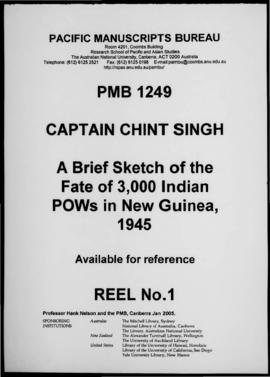- AU PMB MS 1445
- Colección
- September 1947 – December 1948
This collection consists of two reports written by Carl Franke, Cadet Agriculturist, for the Department of Agriculture, Stock and Fisheries (DASF), Territories of Papua and New Guinea, during the period 1947-1948. The first report, ‘Report On – General description of; native agriculture in; and rubber production at Kokoda – Sub-district of the Northern District of Papua’, describes climate (including rainfall), population (including social, spiritual/sorcery), vegetation, religious missions, effects of war, land use systems, food crops, livestock, health and nutrition, trade and economics. It reports on Kokoda sub-districts: Autembo-Wairopi-Hungiri, Biagi, Wawanga-Managalasi and Chirima. It also reports on a government rubber plantation at Kokoda, noting that pre-war records were destroyed during World War II. It describes the processing stages, including preparing land, tapping, standardising, coagulating, smoking, drying or curing, and packing.
The second report, ‘A Report on the Agricultural Potentiality of the Goilala Sub-district of Papua’, describes the location, including communications infrastructure, population, language groups, climate (including rainfall), customs, kinship and marriage, social organisation, chieftainship, politics, diet and feasts, sorcery, religious missions, health and nutrition, land use and tenure, gardens, crops, and economics. The report also includes Franke’s patrol diaries.
Both reports contain photographs and hand-drawn maps.
Franke, Carl





